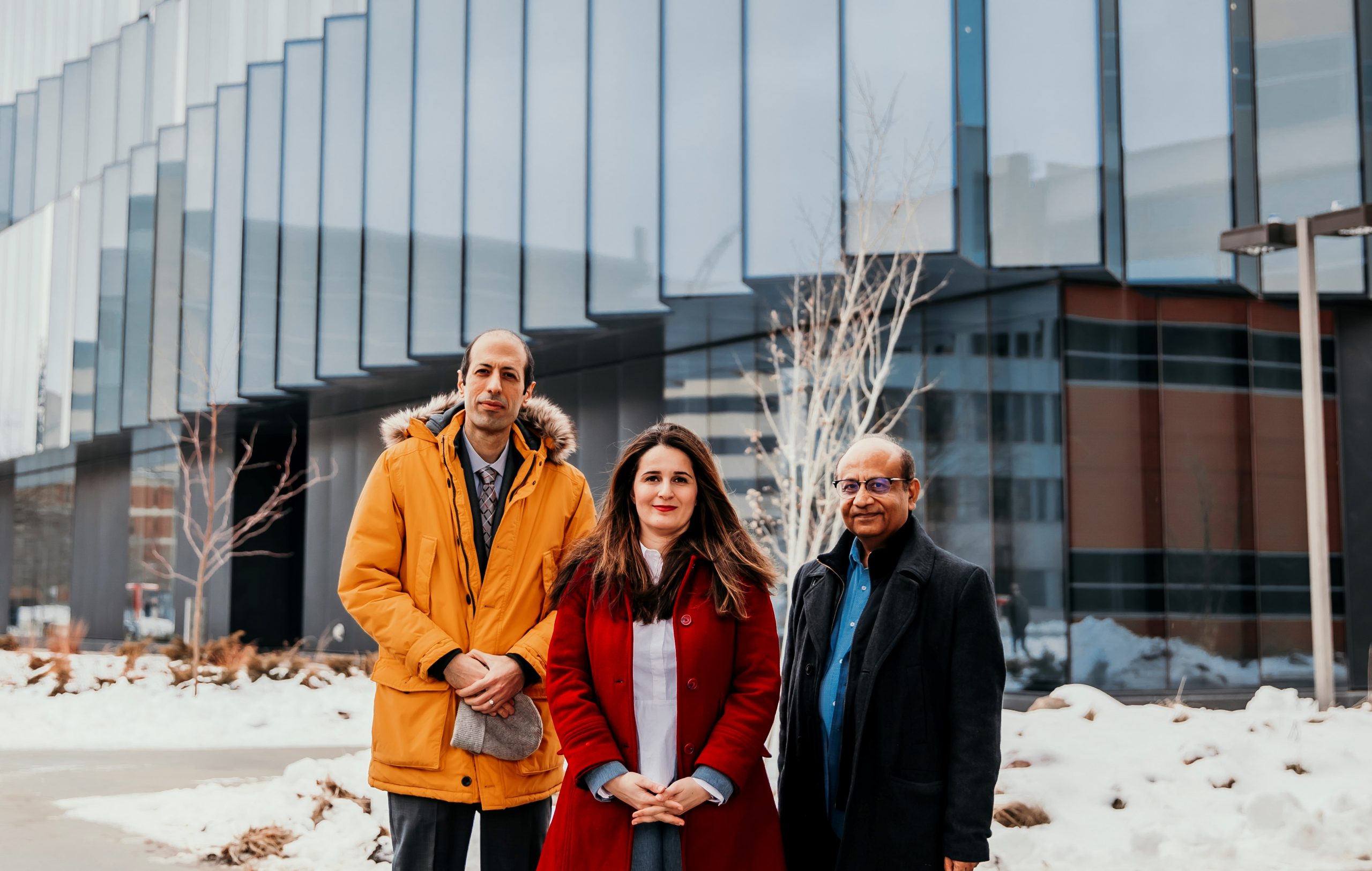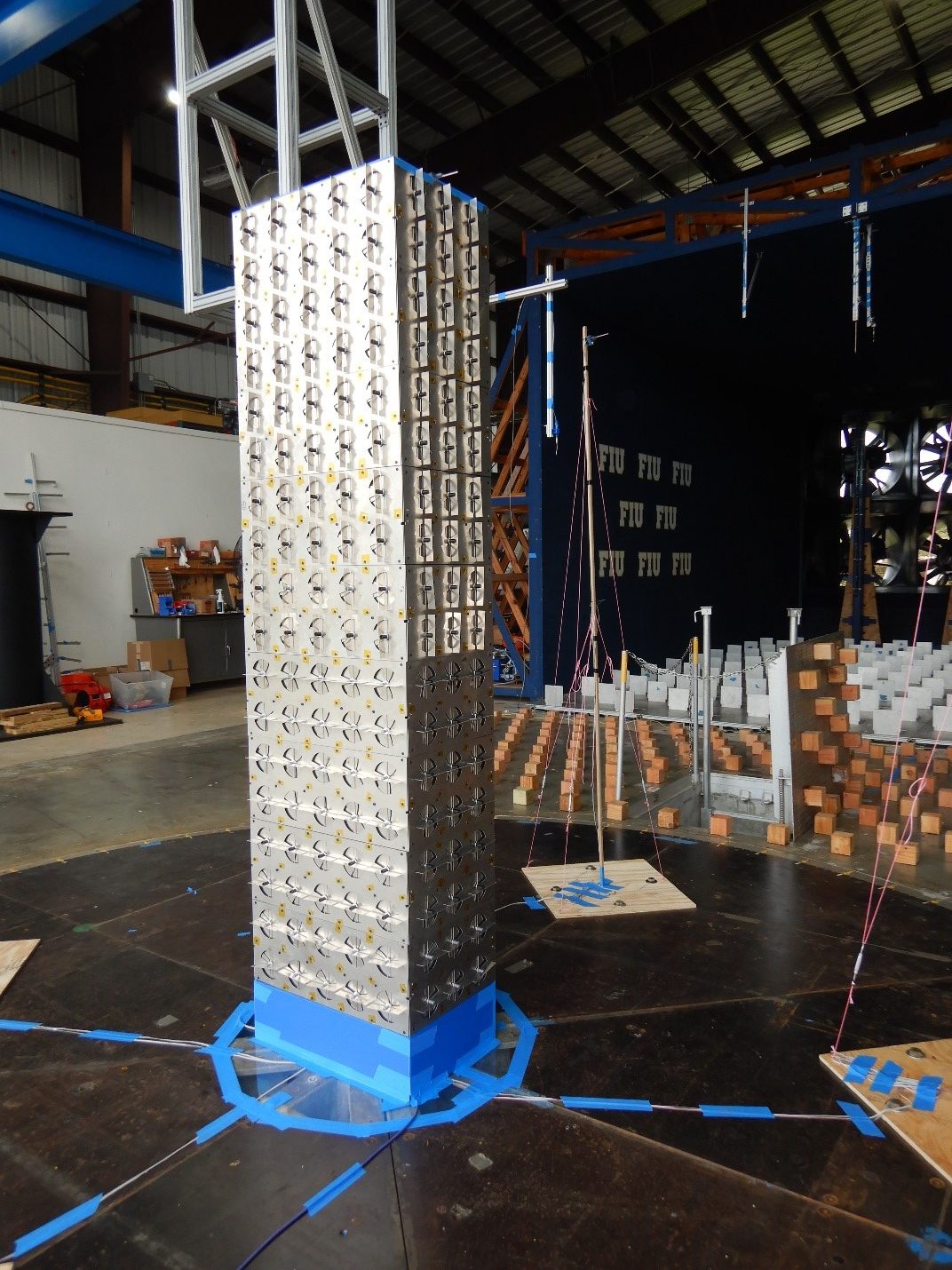If walls could talk: Cyclone Engineers develop cyber-physical system for exterior walls to “think for themselves”
Author: Sarah Hays
Author: Sarah Hays

The first time Alice Alipour saw a building shapeshift, she was stopped in her tracks, to say the least.
On a research trip a few years ago, Alipour walked by a building, and all of the sudden, the exterior walls began to move, turning and changing to maximize solar energy absorption into the building.
That moment planted a seed in her mind that soon led to what became a groundbreaking project funded by the National Science Foundation.
Associate professor Alice Alipour (CCEE), associate professor Behrouz Shafei (CCEE) and professor Partha Sarkar (aerospace engineering) received a grant from the National Science Foundation (NSF) in 2018 to study what they call a Smorphacade (short for a Smart Morphing Façade), a type of building exterior that is what some could consider alive. Recently, they received another project from NSF to conduct technology transfer on this fundamentally transformative idea.
In most buildings, the exterior (known as the facade) is built to be passive and to prevent weather impacts on the interior. The research team is taking those characteristics and combining a network of pressure, velocity, and acceleration sensors strategically positioned on building surfaces to create an active façade, the Smorphacade. When excessive vibration-causing wind flows are detected, the Smorphacade will change surface roughness and porosity to mitigate wind-induced load effects on the building. The Smorphacade does this all through its own internal communication based on Artificial Intelligence – making it self-sufficient and able to think on its own.
Alipour compares the Smorphacade system to the nerves and muscles in the human body. The Smorphacade is a building exterior that reacts to outside forces.
How does it react? Through a layer of sensors, similar to the nerves in our body. In the same way that our muscles tense or flex to protect from outside forces, a Smorphacade can sense wind forces and adjust its exterior accordingly.
“Imagine that all the sensors on the facade are like the nerves in your body,” Alipour said. “These systems are accessing all this information from around you, and then the mechanical systems, similar to what would be your muscles, are responding to the information and moving to mitigate the hazard.”

“Having an active facade offers many benefits. The main structural elements of a building equipped with the Smorphacade could be smaller in size, resulting in less construction material and carbon footprint,” Shafei said. “But the bigger inspiration for this innovation is reducing wind effects and associated safety risks for various buildings in high wind regions.”
Although the primary goal of the Smorphacade is wind load reduction, smart facades also open up the opportunity to be used to reduce glare and energy use, as well as generating their own energy source, if integrated with proper materials.
The research team just completed testing of a Smorphacade at Florida International University on a 1/75 scale of a 180-meter building. Results showed that when using the Smorphacade, the vibration and wind load effects on the building were reduced drastically.
“With this new NSF grant, we are excited to push the technology to the next level through introducing a cyber-physical system that ensures the Smorphacade is alive and thinks for itself, even under extreme wind events,” Alipour said.